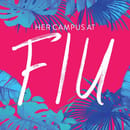Florida’s shocking red tide has left many in awe with its famous beaches being left covered with dead sea life, from fish to sea turtles to whale sharks. What many don’t know is that It’s been an ongoing problem in Florida.
What is the red tide?
The discoloration of seawater due to the blooming of toxic algae. In Florida’s case the red tide is not actually red it’s the K. brevis algae that is actually brown or green. Other algae that has red pigments make it red. In order to distinguish the two researches call them “Florida’s red tide”.
Who does it affect?
Mainly affecting wildlife, the blooms take up all of the oxygen in the water while also producing a toxin causing severe respiratory and gastrointestinal damage or death. It can also affect humans by way of respiratory issues and irritation to the nose, throat and eyes. It has caused health problems to many of those that visit, live on or near to the affected beaches.
What fuels the red tide? Can we prevent it?
The algae originally begin in the ocean then is brought closer to shore by currents. Once its near shore it’s exposed to agricultural run-off such as fertilizers, producing the harmful blooms in large quantities. The best way to prevent it is to reduce agricultural waste from getting into the water.
According to the United States Environmental Protection Agency (EPA), individually we chose to buy phosphate-free detergents and use the correct amount. As well as only applying fertilizers when necessary, not before windy or rainy days, and avoid applying fertilizers near water ways.
For more tips visit:
The United States Environmental Protection Agency
The current red tide is on the gulf from Naples all the way to Tampa.
Try to avoid these beaches and areas as much as possible until the red tide is under control.
xoxo,
Rose



